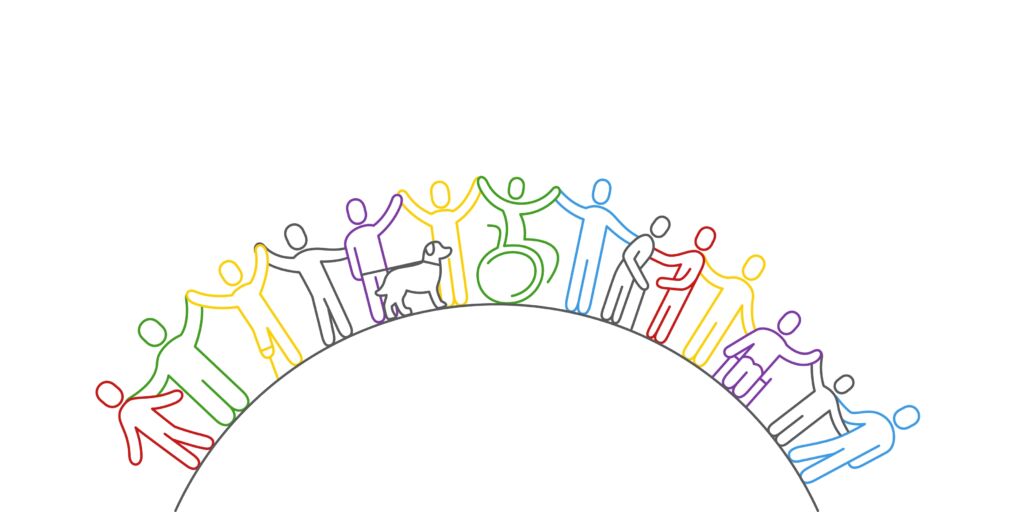Fostering Equality, Diversity, and Inclusion in the Workplace
A Focus on LGBTQIA+ and Intersectionality by Sarah Harrison.
Over the last few weeks, the team has shared blogs and articles about how we can be more inclusive in our workplaces that are made up of so many diverse individuals. How we personally identify is multi layered and therefore engendering/creating a culture where everyone can feel safe in whatever identities they have results in a workplace that is more productive and creative.

In today’s dynamic workplace, promoting equality, diversity, and inclusion (EDI) isn’t just a moral imperative, but a business one. Ensuring that all employees, particularly those who identify as LGBTQIA+, feel safe, respected, and valued is crucial for fostering a secure working environment that can result in organisations being more resilient and successful. Achieving a true culture of EDI requires more than broad policies; it demands an intersectional approach that recognises the multiple facets of each individual’s identity.
To explain using myself as an example I have many identities some of which can be visible at any one point at work and sometimes can be invisible. Menopausal, large, funny, married, lesbian women are not titles I have ever thought that I would put on myself, but for the moment it covers my identities. There are also my moral, religious and political beliefs that tend to be more hidden, though they are important to me and help make me who I am. These are some of the identities that I embody, think about and portray. I am lucky that in my workplace I can be all of these easily. Interestingly the only one that may affect my capability to do my work to the best of my ability at times is the menopausal one. I could however be discriminated against consciously or subconsciously for many, and that is intersectionality.
Understanding Intersectionality in the Workplace
Intersectionality, a term coined by Kimberlé Crenshaw, describes how various aspects of a person’s identity, such as race, gender, sexuality, and socioeconomic status, intersect and create unique experiences of discrimination or privilege. In the workplace, failing to consider intersectionality can lead to policies that inadvertently exclude or disadvantage certain groups. For example, a policy designed to support LGBTQIA+ employees might not fully address the unique challenges faced by LGBTQIA+ people of colour or those with disabilities.
Practical Steps for Inclusion
Inclusive Policies and Training: Ensure company policies explicitly protect against discrimination based on sexual orientation and gender identity. Conduct regular training sessions to educate employees on LGBTQIA+ issues and the importance of intersectionality. If you have a member of staff who is comfortable sharing their experiences ask them to jointly run a training session. Lived experience is often more impactful coming from a colleague who you know.
Remember that the training should be a safe forum as well and establish that at the start.
Support Networks: Establish employee resource groups (ERGs) for LGBTQIA+ staff and allies. These groups can provide support, foster community, and give a voice to underrepresented employees in organisational decision-making.
Mentorship Programs: Develop mentorship programs that connect LGBTQIA+ employees with mentors who understand their unique challenges and can offer guidance and support.
Regular Feedback: Implement systems for regular feedback to understand the experiences of LGBTQIA+ employees better and make necessary adjustments to policies and practices.
Conclusion
This month is Pride month and I promised myself that I would do something leading up to it which is why New Dawn Resources has looked at ED and I in a more rounded way. The LGBTQI+ community face all of those issues and added to their queer identity that can make life a whole lot more complicated and challenging at times.
Embracing equality, diversity, and inclusion in the workplace, especially through an intersectional lens, not only benefits employees but also enhances organisational performance.
New Dawn Resources has covered age, disability and mental health and wellbeing over the past weeks and drawing all those strands together we come back to intersectionality. By recognising and valuing the diverse identities of ALL employees, companies can create a more dynamic, innovative, and harmonious workplace.
Finally, I come back to a comment that Tash Koster-Thomas made on a course I attended which really resonated with me. She said that we do not have to change a culture overnight, but if in our organisations one person feels they have a safe place to be themselves, or they feel safe to share with someone an identity they have kept hidden for whatever reason that is a step forward into a inclusive culture.
ED and I is not an add on and by engaging, promoting and embracing it the rewards for any organisation however large or small can be amazing. I believe that allowing people to be their true selves does not hinder an organisation, suppress productivity or create conflict it does the opposite and understanding other people’s identities and challenges allows for better communication and collaboration.
For more insights and resources on workplace diversity and inclusion, visit New Dawn Resources. We also train and can devise workshops for your organisation.